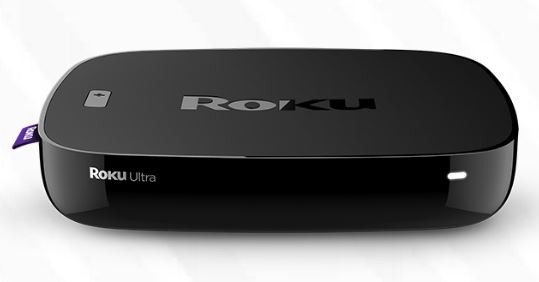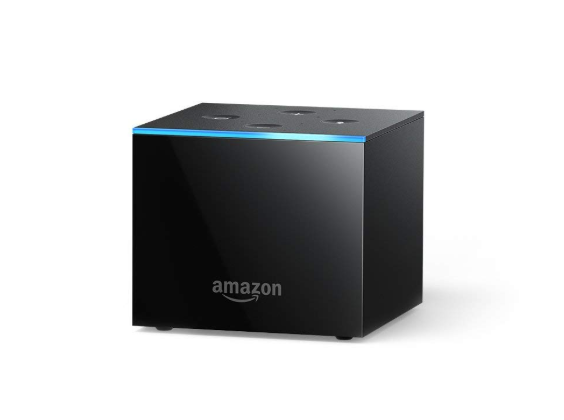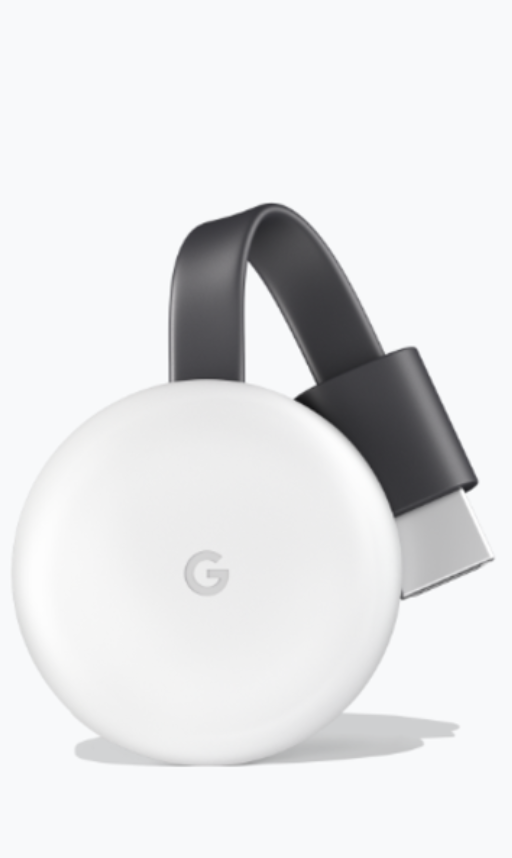Roku vs. Amazon Fire TV vs. Apple TV vs. Chromecast vs. the other TV streamer boxes

Millions of people have ditched overpriced TV plans and are turning to streaming options. The number of Americans that have said “so long” to cable” is estimated to triple in the next three years, from 25.3 million to 76 million.
Even we have a hard time keeping all the different streaming services straight. You know what Netflix has to offer, but what about Hulu, Amazon Prime Video, Peacock, Disney+ or HBO Max? Tap or click here to see how our favorite streaming services stack up.
From Roku to Apple TV, a streaming device will simplify your transition from cable TV to the world of online entertainment. To help you get started, we’re taking a look at some of the top streaming device options out there so you can see how they stack up and pick the best one for your living room.
Apple TV 4K

Why you would want it: The Apple TV 4K currently has the best hardware available in a streaming box, designed to effortlessly handle 60 fps 4K, Dolby Atmos and HDR content.
It also has the cleanest and smoothest interface of the lot, delivering a minimal but polished experience all around.
Since it’s an Apple product, it also works great with iPhones, iPads and Macs. Plus, it’s compatible with Airplay content streaming, Apple Music and other HomeKit appliances. If you’re already using the Apple ecosystem, the Apple TV is a no-brainer.
You can use it to play all movies and music you’ve purchased through iTunes. When it comes to streaming, it has all the essentials, including Netflix, YouTube, Amazon Prime Video, Vudu, Hulu, Plex, HBO, AT&T TV Now, and Sling TV. And if you own digital movies across multiple services, they can all be synced via Movies Anywhere.
And Apple TV owners get a free year of AppleTV+. Tap or click here to see whether this service is worth your while.
Why you might skip it: As it goes with Apple tech, the Apple TV 4K is relatively expensive at just under $200. For much less, you can stream 4K content from Roku or Amazon Fire TV devices.
The Siri touch remote that comes with Apple TV 4K can be clunky and unwieldy. Additionally, if you’re not into the Apple ecosystem and you don’t own any other Apple gadgets, you won’t be getting the most out of an Apple TV.
Check out the Apple TV 4K on Amazon now.
Roku Ultra

Why you would want it: Even with increased competition, Roku remains one of the most popular streaming brands. Why? It works with almost every content provider out there.
It has apps for Netflix, YouTube, Google Play Movies, Amazon Prime Video, Vudu, Hulu, Plex, Sling TV and Apple TV+.
It also has hundreds of third-party video apps that offer free movies and TV shows. If you want to access the most content from various services, Roku is the streaming device for you.
As for the nitty-gritty specs, the Roku Ultra supports 4K, HDR and Dolby Atmos. It’s even bundled with a pair of JBL earphones you can connect to its remote for wireless audio.
Why you might skip it: If there’s a downside to Roku gadgets, it’s the interface. The higher-end Roku Ultra is no exception.
The interface can be slow at times and it definitely looks dated. Additionally, Roku is clamping down on third-party apps. Since they update apps automatically, the ones you have installed can be deactivated without prior warning.
Amazon Fire TV Cube

Why you would want it: As you’d expect, Amazon content is front and center on the Fire TV. It also has must-have apps like Netflix, Vudu, Hulu, Plex, and Sling TV. And now, thanks to Amazon and YouTube burying the hatchet, you can stream YouTube through the Fire TV as well.
Fire TV devices are also the “smartest” out there. The Fire TV Cube has built-in Alexa functions. You can dim your smart bulbs, control your smart appliances, ask questions, set timers — pretty much anything a regular Amazon Echo can do.
You can also use your voice to search, play, pause, fast-forward and handle all the things you would normally do with a remote. You can even turn an HDMI-CEC-compatible TV on or off and adjust its volume.
But don’t worry if you have an older TV. The Fire TV Cube also has a built-in IR transmitter so you can use it as a universal remote and voice control any TV, old or new.
It can also duplicate the features of Amazon’s Echo Show. With an Alexa voice command, the Fire TV Cube can provide you with detailed weather forecasts, display lyrics to songs and show you live video feeds from Alexa-compatible security cameras.
The Fire TV Cube supports 4K content, HDR and Dolby Atmos.
Why you might skip it: Like its apps, Amazon’s Fire TV interface is cluttered, filled with promoted content and can be a pain to navigate through. Alexa Fire TV integration is still occasionally frustrating and voice-controlling a TV through the Fire TV Cube can be painfully slow.
Chromecast Ultra

Why you would want it: If you’ve ever owned a Chromecast, you know how handy this unobtrusive little gadget is. You can cast or stream content from your iOS or Android smartphone or Chrome browser right to your TV. You can even cast your whole desktop if you want to.
The Chromecast is not a traditional streaming box like the others, though, as it doesn’t come with its own remote. You’ll have to rely on your smartphone instead.
When it comes to apps, you can stream content from Netflix, Hulu, HBO Now, Prime Video, Sling TV, Plex, and Vudu.
Like the Fire TV Cube, you can integrate a Chromecast with your smart home. This one pairs with Google Home and with HDMI-CEC compatible TVs, giving you usable (but limited) hands-free voice control.
With the Chromecast Ultra, you can cast 4K and HDR content, as well. It’s one of the cheapest streaming gadgets to do so, at around $70. The standard Chromecast is about half the price.
Why you might skip it: Again, this streaming device has no physical remote. You will always depend on your smartphone or tablet to operate it. Note you’ll also need a third-party app or another workaround to stream iTunes content.
Check out the Google Chromecast Ultra at Amazon. Buy the third-generation Google Chromecast here.
Amazon Fire TV Stick 4K

Why you would want it: It’s hard to tell from the photo above, but the Fire TV Stick is tiny. But don’t be fooled, it packs a serious punch in terms of entertainment value.
Imagine the Fire TV Stick as a stripped-down Fire TV Cube. It runs the same operating system, and you can access Alexa through the included remote with the push of a button. But unlike the Cube, you can’t call on Alexa with just your voice and it’s not compatible with other smart home products.
On the flip side, this can be beneficial if you want the convenience of Alexa occasionally without the privacy issues that come with it. Tap or click here to see how Alexa can spy on users.
The Fire TV Stick is also much cheaper than the Fire TV Cube — and takes up much less space to boot. All you need to do is plug it into the HDMI slot on your TV and plug in the power adapter. Easiest setup ever.
The Fire TV Stick supports 4K content, HDR and Dolby Atmos. It retails for around $40, which makes it among the best budget options you can purchase for streaming.
Why you may skip it: In a nutshell, the Fire TV Stick is the Fire TV experience distilled. There are no extra bells and whistles other than the Alexa Remote, which is limited compared to the full-fledged Alexa found in the Cube and other Echo devices.
We may receive a commission when you buy through our links, but our reporting and recommendations are always independent and objective.
Tags: Amazon, Amazon Kindle, Amazon Prime Video, Americans, Android, Apple, apps, cable, devices, Google, home, Hulu, Max, Netflix, operating system, Peacock, privacy, Roku, security, streaming, streaming device, streaming services, YouTube
